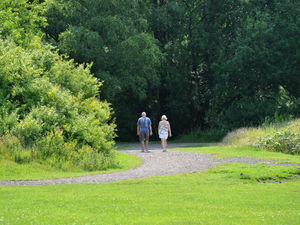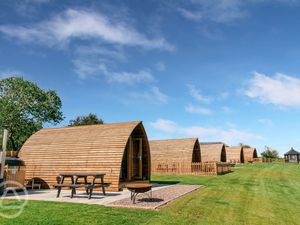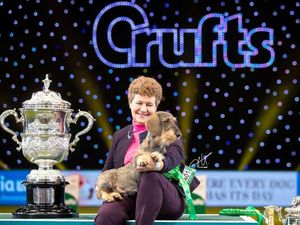Remembering 'lovely Lilleshall' the inter-war pleasure resort
"See Lilleshall and see the thrill of living."
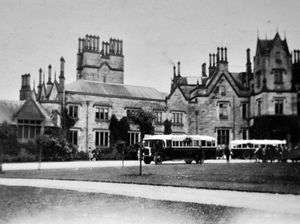
That was the boast made in a brochure for "lovely Lilleshall" in the days in the 1920s and 1930s when Lilleshall Hall and its grounds were turned into a sort of cross between Trentham Gardens and Alton Towers.
It had everything – grand stately mansion, a miniature railway, a golf course, a racecourse, glorious gardens, and even, very fleetingly, its own civil aerodrome until it was shut down for safety reasons.
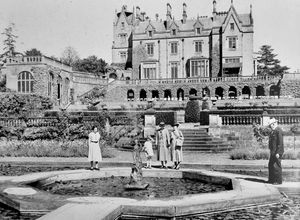
Today Lilleshall Hall has new and different claims to fame, as a centre of sporting excellence. The hall, the former home of the Duke of Sutherland, was bought by the Central Council for Physical Recreation in 1949 and accepted its first courses in January 1951.
But between the wars it was a pleasure resort which went as Lilleshall Park and was owned by a syndicate headed by a Mr H Ford, the managing director.
It was a magnet for visitors coming by car, bus, train, and even, believe it or not, stagecoach, from places like the Black Country and Staffordshire, as well as more locally.
Typically they would alight at Newport railway station and make the last part of the journey by charabanc.
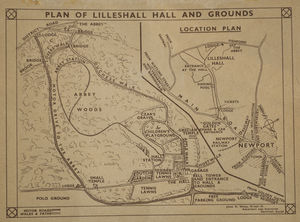
There can be very few people now who can remember it, but in a 2003 interview the then 74-year-old Arthur Hawkins of nearby Weston Heath recalled his childhood memories.
“It had lovely gardens, and there would be teas on the lawn and all that sort of thing,” he said.
“Down at the bottom of the gardens was parkland. They had a platform on a tree one side, and then they had, if I remember rightly, a basket, like a balloon basket, which went down from this platform up in the trees right across the grounds to the base of another tree, so people could have a free ride.
“There was motorcycle racing on the Sunday in the park until some lad got killed. I think they stopped it then.”
He remembered that racing ace and speed record holder Malcolm Campbell was there with his car Blue Bird once, and there was a searchlight on the roof of the hall, which shone in the sky as a sort of advertising and promotion tactic to draw attention to the venue.
Mr Hawkins joined the fun at the hall as a young lad in the 1930s, and would jump on the miniature train, which had back to back seating.
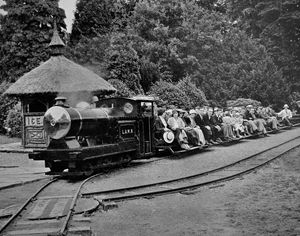
“The train would have started running in the late 1920s, I would think, and finished with the war, which curtailed everything. I don’t think it ever restarted afterwards.”
The mile-long rack for the miniature railway was laid in 1928 and the brochure shows that it ran from the "Hall Station" as a single track into the Abbey Woods and then looped round, with passengers alighting at "Abbey Station" facing a bit of a walk to see the ruins of Lilleshall Abbey.
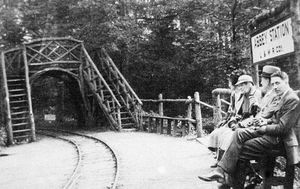
The engine was made to look like a steam loco but was actually petrol driven. It could take 36 passengers in open carriages with back to back seating.
Various other features in the brochure's map include a ghost walk, a polo ground, tennis lawns, "Czar's grave," "Golden Gates entrance," and a Grecian temple.
We can flesh out some further details by dipping into contemporary newspapers from 1928, which appears to be a key year for developments at "Lilleshall Park," with the tone of the stories pointing to it being a new venture, so perhaps it opened in 1927 as there is a picture from that year showing charabancs of visitors pulling up.
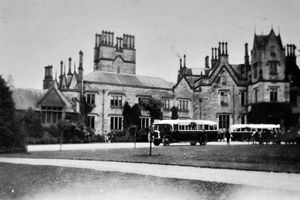
Pony races were held on a new seven and a half furlong course called Lilleshall Park for the first time on Saturday, June 2, 1928.
"The turf is excellent, and the removal of a small coppice has resulted in a circuit every inch of which is visible to spectators," reported the Express and Star.
From May 1, 1928, it was possible to get to the resort by old fashioned stagecoach, starting from the Grand Hotel in Birmingham, and following the old coach road through Soho and Handsworth, then into Wolverhampton and up Tettenhall Road, with a change of horses at The Crown.
Then it went through Albrighton and Tong, with stops at the old inns to water the horses, and along Watling Street and up to the venue through the "golden gates" of the main entrance.
There was at about the same time an ill-fated attempt to create a civil aerodrome at Lilleshall Park. Just before Easter 1928 the Air Ministry granted a full licence for part of the extensive grounds to be used as an aerodrome, the expectation being that from Easter there would be a regular air service between Lilleshall and Castle Bromwich.
Provided by Henderson Flying Company, it would be the first of its kind in the country, and efforts were simultaneously being made to find a suitable landing ground on the outskirts of Wolverhampton to create a regular Castle Bromwich-Wolverhampton-Lilleshall Hall service.
The licence had been granted after an inspection by two officers of the RAF depot at Shrewsbury, but a few days later a Captain Gold flew a three-seater Avro aircraft up from Brooklands but declined to land at Lilleshall as he didn't like the look of things and came down in a field three miles away.
"Captain Gold gave as his reason that, although he had visited Lilleshall Park beforehand, it looked different from the air," it was reported.
The company had already advertised daily flying services which were cancelled when Captain Gold refused to carry them out.
A Major Mealing from the Air Ministry then arrived to do another inspection, bizarrely arriving by train and leaving by stagecoach, as a result of which the licence was withdrawn.
Geoffrey Mander, a member of Midland Aero Club, flew over the site a few weeks later in "Wulfrun," a Moth aircraft which had been presented to the club by the Express and Star, and piloted by club instructor, a Flight Lieutenant Rose.
Even if the licence had not been cancelled, he subsequently wrote, it would not have been practicable to land because the wind direction would have meant a risky take-off towards some trees on rising ground.
He thought the Air Ministry had been right, saying: "The place is not really suitable for continuous joyriding owing to the heavily wooded nature of the surroundings, and this could not well be altered without destroying a good deal of the beauty of the landscape."
His report implied that the site chosen for the aerodrome had been the old polo ground.
As for the Lilleshall miniature train, there is good news, as it survives to this day on the Old Kiln Light Railway at the Museum of Rural Life in Surrey, and its story is featured in a YouTube video called Lawrie's Mechanical Marvels.
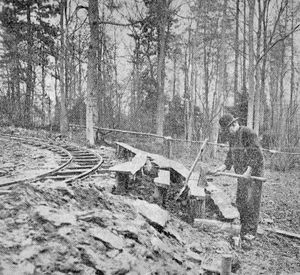
Presenter "Lawrie" – no surname is offered – tells how it was petrol-engined No. 1759 dating from 1929 built by Baguley for the Lilleshall Abbey Woodland Railway, and was the second loco on the line.
"The first locomotive they ordered was a year before this and had a 16hp motor and was basically rubbish. They tried a couple of coaches with it and it couldn't cope, so went back to Baguley and asked for a better one."
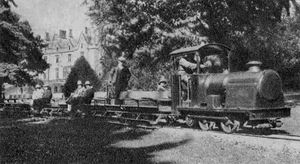
The second one had a more powerful engine of 20 to 25hp, but would boil over resulting in steam coming from under the dome, fooling tourists into thinking it was a real steam engine.
The railway was shut down for the war and never reopened, and the loco languished in a shed until being bought in 1952 by Alton Towers, where it ran on the miniature railway there.
When the original petrol engine failed it was replaced with a Perkins diesel engine, and the loco was given the name Altonia. Altonia ran for many years at Alton Towers until the end of its railway – it did not reopen in 1997. She was bought privately in 2002 and was given on loan to the Old Kiln Light Railway in 2012.
And according to research by Nick Coppin, Lilleshall's original 1928 loco No. 1695 was also stored from 1939 until sold to the Rev Teddy Boston at Cadeby in Leicestershire in May 1967.



